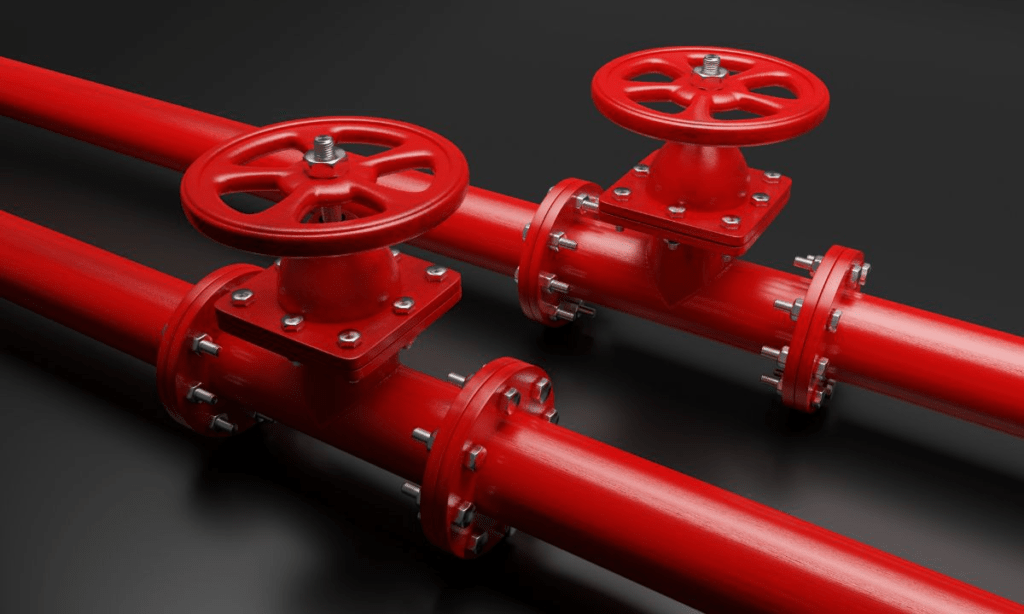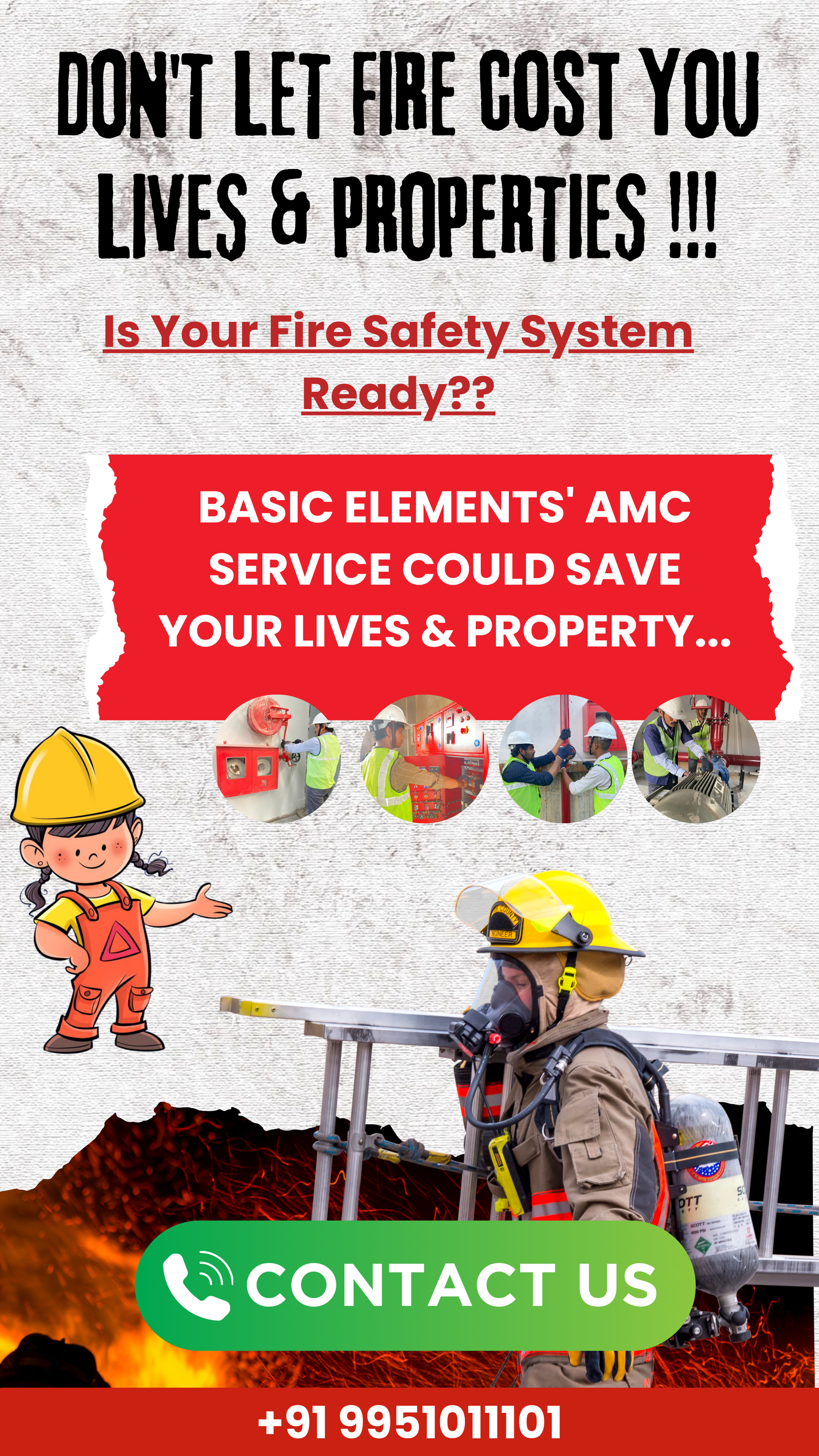Introducing Flexible Fire Sprinkler Pipe: The Game-Changing Solution
Flexible fire sprinkler pipes represent a significant advancement in fire protection technology, offering numerous benefits over traditional rigid systems. This innovative approach is changing the landscape of fire safety in buildings of all types. Let’s explore the key advantages and features of flexible fire sprinkler pipes.
Flexible Fire Sprinkler Pipe Benefits:
- Ease of Installation:
- Reduced installation time: Flexible pipes can be installed up to 60% faster than rigid systems.
- Fewer fittings required: This decreases potential leak points and simplifies the installation process.
- Adaptability to obstacles: Easily routed around existing structures, ductwork, and other building elements.
- Cost-Effectiveness:
- Lower labor costs: Faster installation translates to reduced labor expenses.
- Minimized material waste: Flexible pipes can be cut to exact lengths, reducing excess material.
- Reduced need for system redesigns: Adaptability to on-site conditions minimizes costly plan changes.
- Enhanced Safety:
- Seismic resistance: Flexible pipes can withstand earthquakes better than rigid systems, maintaining integrity during ground movement.
- Reduced accidental damage: Less likely to be damaged during building maintenance or renovations.
- Improved Performance:
- Smoother water flow: Fewer fittings and bends result in reduced friction loss.
- Consistent water distribution: Flexibility allows for optimal sprinkler head placement.
- Longevity:
- Corrosion resistance: Many flexible pipes are made from materials that resist corrosion better than traditional metal pipes.
- Reduced wear and tear: Flexibility minimizes stress on the system caused by building movement or temperature changes.
Also Read: The Ultimate Guide to Fire Fighting Sprinkler Systems: Installation, Maintenance, and Benefits
Flexible Fire Sprinkler Pipe Advantages:

- Versatility:
- Suitable for various building types: From high-rises to historic renovations, flexible pipes adapt to diverse architectural needs.
- Ideal for retrofits: Can be easily installed in existing buildings with minimal disruption.
- Space-saving:
- Compact design: Flexible pipes can navigate tight spaces more easily than rigid pipes.
- Reduced ceiling space requirements: This can be particularly beneficial in buildings with low ceiling heights.
- Aesthetic improvements:
- Less visible: Can be more easily concealed, preserving architectural aesthetics.
- Fewer exposed components: Reduced number of visible fittings and connections.
- Environmental benefits:
- Reduced material use: Less waste generated during installation and fewer resources required for manufacturing.
- Energy efficiency: Smoother water flow can lead to reduced pumping requirements.
- Maintenance advantages:
- Easier inspections: Flexibility allows for simpler access to hard-to-reach areas.
- Simplified repairs: Damaged sections can often be replaced without extensive system disassembly.
Flexible Fire Sprinkler Pipe Features:
- Material composition:
- High-quality polymers: Many flexible pipes are made from durable, fire-resistant thermoplastic materials.
- Reinforced construction: Often includes braided or woven reinforcement for added strength.
- Connection systems:
- Quick-connect fittings: Allow for rapid, secure connections without the need for threading or welding.
- Compatibility: Many systems are designed to integrate with existing sprinkler components.
- Size range:
- Multiple diameters available: Typically ranging from 3/4 inch to 2 inches, suitable for various flow requirements.
- Custom lengths: Can be cut to precise measurements on-site, reducing waste.
- Pressure ratings:
- High-pressure capability: Many flexible systems can handle pressures up to 175 psi or more, meeting or exceeding rigid pipe standards.
- Temperature resistance:
- Wide operating range: Designed to maintain performance in both high and low-temperature environments.
- Certifications and approvals:
- UL listed: Many flexible pipe systems meet Underwriters Laboratories safety standards.
- FM approved: Compliance with Factory Mutual Research Corporation standards for property loss prevention.
- Smart integration capabilities:
- Compatibility with monitoring systems: Some flexible pipe systems can integrate with building management and fire alarm systems for enhanced monitoring.
Also Read: Ensuring Fire Safety in Hospitals: Essential Guidelines and Best Practices
Considerations for Implementation:
While flexible fire sprinkler pipes offer numerous advantages, there are some factors to consider:
- Initial cost: The materials for flexible systems may have a higher upfront cost, though this is often offset by reduced installation expenses.
- Training requirements: Installers may need additional training to work with flexible systems effectively.
- Code compliance: Ensure that flexible systems meet all local building and fire safety codes.
- System design: Proper hydraulic calculations are crucial to ensure adequate water flow and pressure.
Future Trends:
As flexible fire sprinkler pipe technology continues to evolve, we can expect to see:
- Advanced materials: Development of even more durable and fire-resistant flexible pipe materials.
- Increased integration: Greater compatibility with smart building systems and IoT devices.
- Expanded applications: Use in more specialized environments, such as industrial settings or extreme climates.
- Sustainability focus: Continued improvements in eco-friendly manufacturing and recyclability.
Flexible fire sprinkler pipes represent a significant leap forward in fire protection technology. By offering easier installation, improved performance, and greater adaptability, they address many of the limitations of traditional rigid systems.
As building designs become more complex and the demand for efficient, adaptable fire protection grows, flexible fire sprinkler pipes are positioned to play an increasingly important role in ensuring building safety. However, as with any fire protection system, proper design, installation, and maintenance remain crucial to ensuring optimal performance and compliance with safety standards.
Also Read: Malda Railway Hospital Fire Blaze: A Critical Fire Safety Reminder
Maximizing Fire Sprinkler Pipe Length for Optimal Coverage

When designing a fire sprinkler system, one crucial factor to consider is the length of the pipes. Getting the pipe length right ensures effective coverage and compliance with safety regulations. Let’s explore the requirements, limitations, and flexibility of fire sprinkler pipe lengths.
Fire Sprinkler Pipe Length Requirements
Fire sprinkler systems must meet specific requirements to function properly:
- Coverage area: Pipes need to be long enough to reach all areas of the building that require protection.
- Water pressure: Longer pipes can lead to pressure loss, so the length must allow for adequate water pressure at the sprinkler heads.
- Response time: Pipes should be designed to allow water to reach the farthest sprinkler heads quickly in case of a fire.
Fire Sprinkler Pipe Length Limitations
While it’s tempting to use longer pipes to cover more area, there are limitations to consider:
- Maximum allowed length: Building codes and fire safety standards often specify maximum pipe lengths to ensure proper water flow and pressure.
- Pressure loss: Longer pipes increase friction, which can reduce water pressure at the sprinkler heads.
- Installation challenges: Excessively long pipes can be difficult to install and maintain, especially in complex building layouts.
Fire Sprinkler Pipe Length Flexibility
Despite these limitations, there is some flexibility in designing sprinkler systems:
- Pipe diameter: Using larger diameter pipes can help maintain pressure over longer distances.
- Looped systems: Creating loops in the piping layout can improve water flow and pressure distribution.
- Booster pumps: In some cases, pumps can be added to the system to increase pressure for longer pipe runs.
- Alternative materials: Some modern pipe materials offer less friction, allowing for slightly longer runs without significant pressure loss.
By carefully considering these factors, fire protection engineers can maximize sprinkler pipe length while ensuring optimal coverage and system performance. Always consult local building codes and work with experienced professionals to design a fire sprinkler system that meets safety requirements and provides the best possible protection.
Also Read: Understanding Fire Annunciators: A Comprehensive Guide
Effortless Installation and Customization with Flexible Sprinkler Pipes

Flexible fire sprinkler pipes have revolutionized the fire protection industry, offering significant advantages in installation, customization, and adaptability. Let’s explore how these innovative systems make the process smoother and more efficient.
Flexible Fire Sprinkler Pipe Installation
Installing flexible sprinkler pipes is remarkably straightforward compared to traditional rigid systems:
- Time-saving: Flexible pipes can be easily bent and maneuvered around obstacles, reducing installation time dramatically.
- Fewer fittings: The ability to curve and flex means fewer connectors and fittings are needed, lowering the risk of leaks.
- Reduced labor: The ease of handling flexible pipes often requires fewer workers, cutting down on labor costs.
- Minimal tools: Installation typically requires only basic tools, simplifying the process further.
Flexible Fire Sprinkler Pipe Customization
Customization becomes much easier with flexible sprinkler pipes:
- On-site adjustments: Installers can make quick modifications to accommodate unexpected layout changes or obstructions.
- Precise positioning: The flexibility allows for more accurate placement of sprinkler heads for optimal coverage.
- Retrofit-friendly: These pipes are ideal for retrofitting older buildings where rigid pipes might be challenging to install.
- Aesthetic considerations: Flexible pipes can be more easily concealed, maintaining the visual appeal of the space.
Flexible Fire Sprinkler Pipe Adaptability
The adaptability of flexible sprinkler pipes offers numerous benefits:
- Diverse applications: They’re suitable for various environments, from residential buildings to complex commercial spaces.
- Seismic performance: Flexible pipes can better withstand earthquakes and building movements compared to rigid systems.
- Future modifications: If building layouts change, these pipes can often be adjusted without a complete system overhaul.
- Temperature fluctuations: Flexible pipes can expand and contract more easily with temperature changes, reducing stress on the system.
- Noise reduction: The flexibility of these pipes can help dampen water hammer effects, leading to quieter operation.
By leveraging the installation ease, customization options, and adaptability of flexible fire sprinkler pipes, building owners and fire protection professionals can create more efficient, cost-effective, and reliable fire suppression systems.
These innovative solutions not only simplify the installation process but also provide long-term benefits in terms of system performance and building safety.
Revolutionize Your Fire Protection System with Flexible Fire Sprinkler Pipe

As building safety standards evolve, so does the technology used to protect structures from fire. Flexible fire sprinkler pipes are at the forefront of this revolution, offering numerous advantages over traditional rigid systems. Let’s explore why upgrading to flexible pipes is a smart investment that future-proofs your fire protection system.
Upgrade to Flexible Fire Sprinkler Pipe
Switching to flexible fire sprinkler pipes can significantly enhance your building’s fire protection:
- Improved efficiency: Flexible pipes allow for smoother water flow with fewer fittings, potentially improving the system’s overall performance.
- Easier maintenance: The simpler layout of flexible systems often means easier access for inspections and repairs.
- Enhanced coverage: The ability to navigate tight spaces and awkward angles ensures more comprehensive protection throughout the building.
- Reduced downtime: Installations and repairs are typically faster with flexible pipes, minimizing disruptions to building operations.
Flexible Fire Sprinkler Pipe Investment
While there may be upfront costs, investing in flexible fire sprinkler pipes offers long-term benefits:
- Cost-effective installation: The ease of installation often results in lower labor costs and shorter project timelines.
- Longevity: High-quality flexible pipes are durable and resistant to corrosion, potentially outlasting traditional rigid pipes.
- Energy savings: The smoother water flow in flexible pipes can reduce the energy needed to maintain proper pressure in the system.
- Lower insurance premiums: Some insurance companies offer reduced rates for buildings with modern, efficient fire protection systems.
- Compliance assurance: Flexible systems can more easily adapt to changing building codes and regulations, helping maintain compliance over time.
Flexible Fire Sprinkler Pipe Future-Proof
Opting for flexible fire sprinkler pipes helps future-proof your building’s fire protection:
- Adaptability to renovations: As your building’s needs change, flexible pipes can be more easily modified or extended to accommodate new layouts.
- Technological integration: Flexible systems are often more compatible with smart building technologies and advanced fire detection systems.
- Sustainability: Many flexible pipe materials are recyclable and have a lower environmental impact, aligning with future green building trends.
- Scalability: Flexible systems can more easily accommodate building expansions or changes in occupancy type.
- Preparedness for stricter regulations: As fire safety standards become more stringent, flexible systems offer greater adaptability to meet new requirements.
By upgrading to flexible fire sprinkler pipes, building owners and managers can revolutionize their fire protection systems. This investment not only enhances current safety measures but also positions the building for future advancements in fire protection technology.
The adaptability, efficiency, and long-term cost savings of flexible systems make them an intelligent choice for those looking to stay ahead in building safety and management.








2 thoughts on “Revolutionize Your Fire Protection System with Flexible Fire Sprinkler Pipe”
Pingback: Understanding Fire Suppression Systems
Pingback: Exploring the Different Types of Fire Hydrant Valves
Comments are closed.